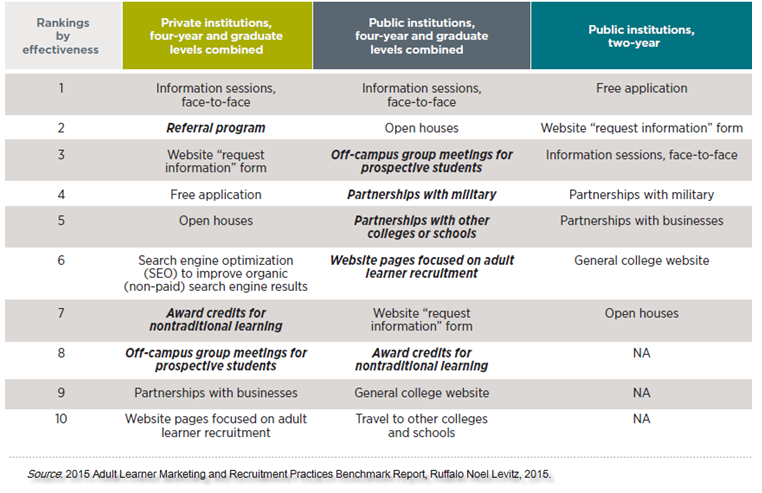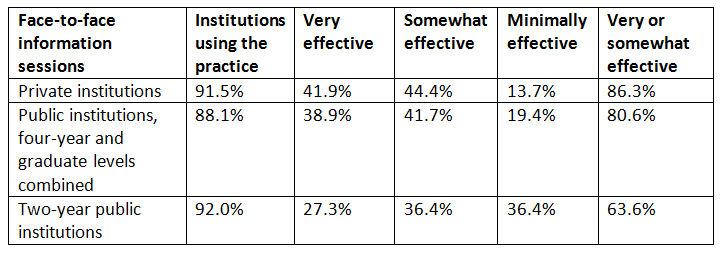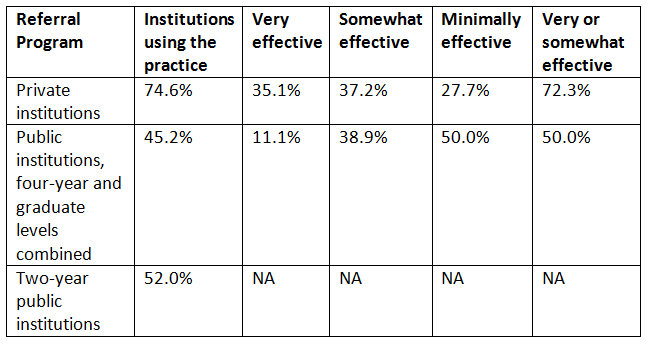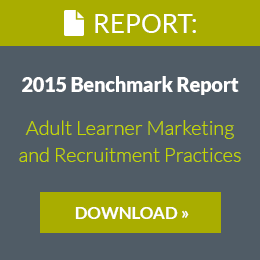enrollment
Finding alternative revenue streams to control tuition, expand diversity, and increase enrollment
In today’s environment, the majority of campuses across the U.S. are looking for ways to keep tuition down as fixed costs continue to increase. Is your campus among them?
To help rein in the rising costs of education, increasing numbers of colleges and universities are turning to the adult, online, and graduate markets to provide alternative revenue, diversification, and growth. However, these markets are relatively young in the world of higher education. For some, they are brand new.
If you are new to the markets of adult, online, or graduate enrollment, you have many things to consider. If your program is existing, how does it compare nationwide? Thanks to the willingness of many of you who responded to a recent poll, Ruffalo Noel Levitz has completed another new benchmarking study—the first devoted to the adult learner.
The new 2015 Adult Learner Marketing and Recruitment Practices Benchmark Report combines its findings across undergraduate and graduate levels, because undergraduate and graduate programs often employ similar practices to recruit adult learners. Nearly 200 institutions participated in this study, creating results that are statistically sound.
By digging into this report, we can learn what are the most effective methods to recruit the adult learner, be they undergraduate, graduate, or online? Which approaches are the most common? How are programs staffed? What is the response time to an inquiry? Do students receive financial aid? Is there a “best practice” that you have used, or perhaps overlooked?
Top 10 most effective practices for generating adult learner inquiries
Let’s start by looking at the top ten most effective practices in generating inquiries from the adult or online learner. In this study, we asked respondents who had at least one adult-focused degree program to rate both the effectiveness and use of 37 strategies and tactics for generating inquiries. Items most frequently rated as “very effective” appear below:

A practice shown in italics indicates that it was not being used by more than a quarter of institutions within the sector, despite the ratings of effectiveness. If you are not using a practice shown in italics, you may want to consider adopting it on a trial basis.
Face-to-face information sessions—a closer look
Let’s take a closer look at the effectiveness of the practice that received the most “very effective” responses. Below we see that respondents from private institutions and two-year public institutions reported similar use of the information session but assigned it a very different value:
When we look at data in this manner, we may also want to investigate what the private campuses are doing differently to create a different value.
If we look at the data related to “referral progam,” very interesting responses appear.
Research shows us that adults believe other adults. In this case, the private campuses tend to maximize their referral base, while the publics do not. Perhaps this is an opportunity for your campus?
Uncover more opportunities in adult, online, and graduate enrollment
We invite you to explore the report and to dive into the data yourself. You may find that you are under-utilizing a common, valued practice while over-using a less valued practice. You might also discover you are under-resourced. If you have questions or would like to discuss your strategies for developing alternative revenue streams, please contact me by email or call me at 800.876.1117 and I’ll do my best to help.


